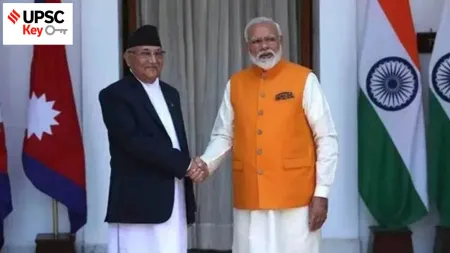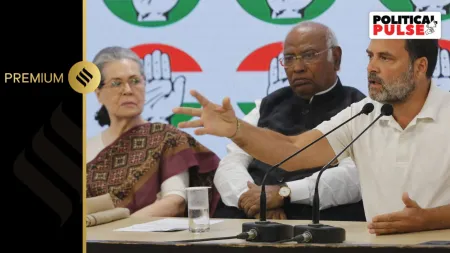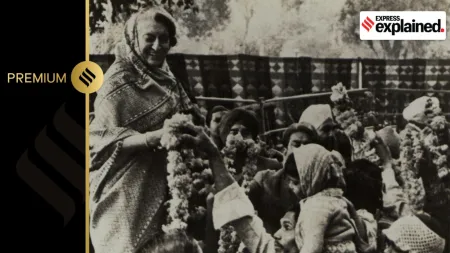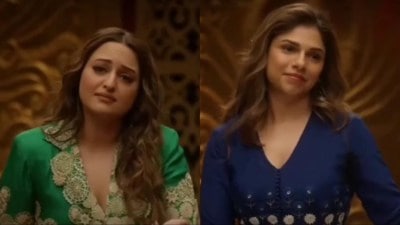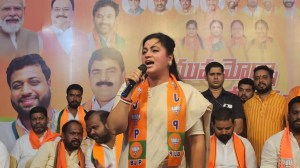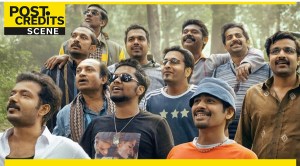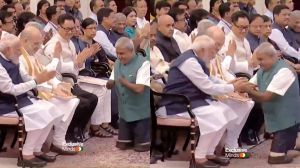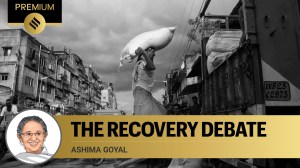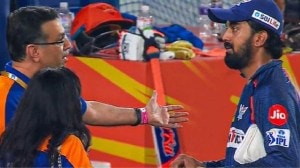- India
- International
Who killed Kamlesh?
He died of an epileptic attack unlike his parents who died of starvation in 2003.
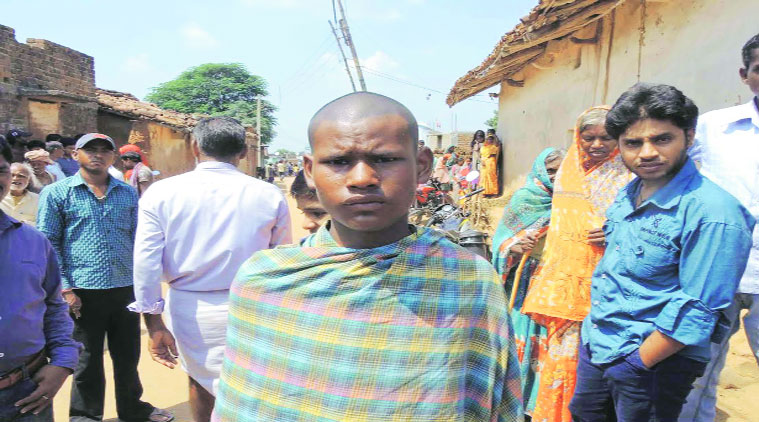 Sunil (above) and Kamlesh failed Class X in 2013 and had to leave school. After that, the close monitoring stopped. (Source: Express photo by Manas Chaudhary)
Sunil (above) and Kamlesh failed Class X in 2013 and had to leave school. After that, the close monitoring stopped. (Source: Express photo by Manas Chaudhary)
The State met Kamlesh and Sunil Munda halfway and expected them to walk the other half on their own. Kamlesh, 18, fell by the wayside on September 25, succumbing to an epilepsy attack on a cot in his mud house in Gola block in Jharkhand’s Ramgarh district.
Unlike what was reported earlier, Kamlesh did not die of starvation like his parents and two-year-old sister had in 2003: the family’s ration card shows the brothers received 35 kg of rice for a total of Rs 35 on September 20. The BPL card also has an entry of 35 kg for July 15. Sunil says he remembers getting at least 10 kg in August.
In 2003, their father Santhu Munda, 36, mother Santhi Devi, 33, and sister Ruby Kumari, 2, had died separately, within a week starting December 16. Though Santhu had died of tuberculosis, his illness had a domino effect on the family — with no one to earn a livelihood, they had run out of food stocks and starved. In 2004, the state welfare department had admitted Kamlesh and Sunil to a residential school in Hazaribagh’s Mandu.
Sunil was beside Kamlesh when he passed away.
The Arjun Munda-led BJP government of the time had suspended seven officials of the district administration following the episode. On September 27, Munda, now Leader of Opposition in the state Assembly, was at Betul Khurd village again, consoling Sunil but offering no solutions. “I have come here after hearing the news. There will be an inquiry into how this happened,” he said.
Munda’s visit seemed to spur the government machinery to act. The next day, the district administration announced that it would exhume Kamlesh’s body to determine cause of death. On September 29, Food and Civil Supplies minister Lobin Hembrom summoned the Ramgarh Deputy Commissioner to Ranchi. “I do not think the district administration is at fault. The DC told me that about 50 kg of rice was delivered to the boy’s house in September,” said Hembrom. This included the 35 kg delivered by the BDO a day after Kamlesh’s death. The DC has, however, suspended three officials.

In 2013, the brothers had attempted their Class X examination together. “We failed. The school does not let students stay beyond Class X, even if they fail,” says Sunil. So both the brothers had to leave. “This is a violation of the Commission for Protection of Child Rights Act, 2005. The district administration was duty-bound to ensure they continued with their studies,” says Sanjay Mishra, member of the state Commission for Protection of Child Rights.
“While they were at the school, we ensured the boys got free food, clothes and good medical check-ups. They were even taken to RIMS (Rajendra Institute of Medical Sciences, Ranchi) twice,” says Ramgarh Deupty Collector Abu Imran. Once out of school, the freebies stopped and the boys — orphans after their grandfather passed away — were left to fend for themselves.
The PDS supply of rice, salt and kerosene was clearly not enough. “Will just rice do? What about clothes, medicines? All we had on most days was congee,” says Sunil, his temper flaring, when asked whether the PDS allotment was enough for the two of them. With no medical check-ups anymore, Kamlesh was struck down by frequent epilepsy attacks. Sunil began working as a waiter at a dhaba in Gola town for Rs 2,500 a month.
The administration had also promised them a pucca house under the Indira Awaas Yojana. Their uncle Shanicharan Munda, who lives nearby, has built a house under the scheme. When asked why he did not help Kamlesh, who was bedridden since mid-August, he shrugged his shoulders. “I reach home only at 3 am after work and was too tired to ask after him,” he says. Another relative, Manki Munda, who has not got a house under IAY, reasoned why Kamlesh too did not get one: “You have to pay Rs 3,000-4,000 for a house. Those who have money, pay. The poor like us never get what we deserve.”
Balram, the state advisor to the Supreme Court commissioners in Right to Food cases, visited the village now, as he had in 2003. He saw evidence of the state failing to follow up. “Back in 2003, it was a clear case of starvation. Now, it may not be a starvation death, but the government is not in the clear,” he says.
Balram says the principal of the boys’ school had written to the district welfare officer and the sub-divisional officer on March 28 last year, informing them about their release and Kamlesh’s illness. “Since the DC was legally the guardian of Kamlesh at the time, the district administration should have taken more care,” he says. He also says the brothers had taken to drinking and that he will recommend in his report that Sunil be admitted to a school without delay to wean him from alcohol.
The blame for what happened to Kamlesh may lie with a half-hearted attempt at a welfare State, but his fellow villagers, too, appear to have done nothing. Jharkhand’s Chief Secretary Sajal Chakravarty, who visited the village in 2004 when he was Relief and Rehabilitation Commissioner, says the deaths had been caused by an absence of government schemes coupled with “a lack of human contact”.
“None of the government schemes had reached the family. The father was not even old. At the same time, I vividly remember the village had a standing crop — in fact, a bumper one — at the time. Only if someone had helped out their neighbours,” he said.
May 10: Latest News
- 01
- 02
- 03
- 04
- 05





